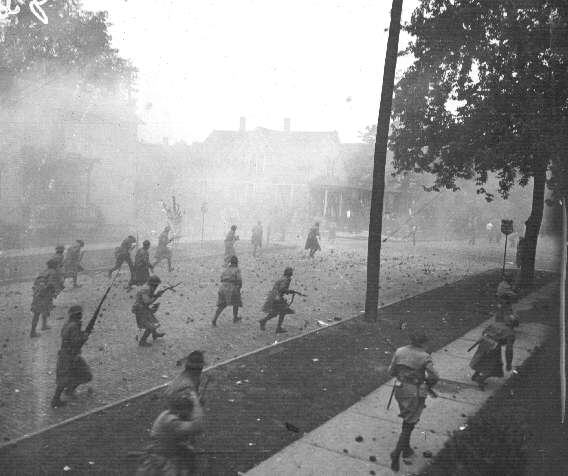From The Labor History Archives -In
The 80th Anniversary Year Of The Great San Francisco, Minneapolis
And Toledo General Strikes- Lessons In The History Of Class Struggle
The Toledo Auto-Lite strike, 1934 - Jeremy Brecher
From The Archives Of The Socialist
Workers Party (America)- Some Lessons of the Toledo Strike
Frank Jackman comment:
Marxism, no less than other
political traditions, and perhaps more than most, places great emphasis on
roots, the building blocks of current society and its political organizations.
Nowhere is the notion of roots more prevalent in the Marxist movement that in
the tracing of organizational and political links back to the founders, Karl
Marx and Friedrich Engels, the Communist Manifesto, and the Communist League. A
recent example of that linkage in this space was when I argued in this space
that, for those who stand in the Trotskyist tradition, one must examine closely
the fate of Marx’s First International, the generic socialist Second
International, Lenin and Trotsky’s Bolshevik Revolution-inspired Communist
International, and Trotsky’s revolutionary successor, the Fourth International
before one looks elsewhere for a centralized international working class
organization that codifies the principle –“workers of the world unite.”
On the national terrain in the
Trotskyist movement, and here I am speaking of America where the Marxist roots
are much more attenuated than elsewhere, we look to Daniel DeLeon’s Socialist
Labor League, Deb’s Socialist Party( mainly its left-wing, not its socialism
for dentists wing), the Wobblies (IWW, Industrial Workers Of The World), the
early Bolshevik-influenced Communist Party and the various formations that made
up the organization under review, the James P. Cannon-led Socialist Workers
Party, the section that Leon Trotsky’s relied on most while he was alive.
Beyond that there are several directions to go in but these are the bedrock of
revolutionary Marxist continuity, at least through the 1960s. If I am asked,
and I have been, this is the material that I suggest young militants should
start of studying to learn about our common political forbears. And that
premise underlines the point of the entries that will posted under this
headline in further exploration of the early days, “the dog days” of the
Socialist Workers Party.
Note: I can just now almost hear some very nice and proper
socialists (descendants of those socialism for dentist-types) just now,
screaming in the night, yelling what about Max Shachtman (and, I presume, his
henchman, Albert Glotzer, as well) and his various organizational formations
starting with the Workers party when he split from the Socialist Workers Party
in 1940? Well, what about old Max and his “third camp” tradition? I said the
Trotskyist tradition not the State Department socialist tradition. If you want
to trace Marxist continuity that way, go to it. That, in any case, is not my
sense of continuity, although old Max knew how to “speak” Marxism early in his
career under Jim Cannon’s prodding. Moreover at the name Max Shachtman I can
hear some moaning, some serious moaning about blackguards and turncoats, from
the revolutionary pantheon by Messrs. Marx, Engels, Lenin and Trotsky. I rest
my case.
********************


No comments:
Post a Comment